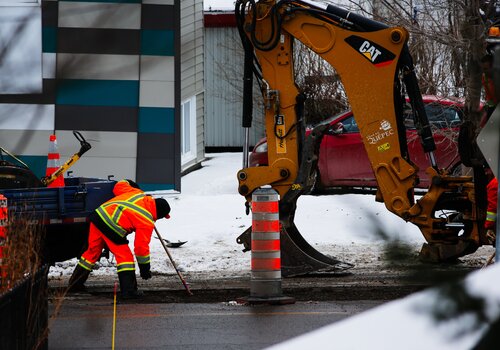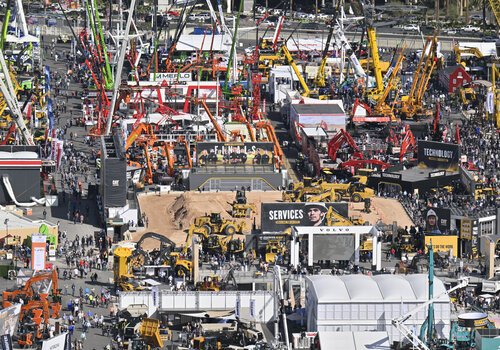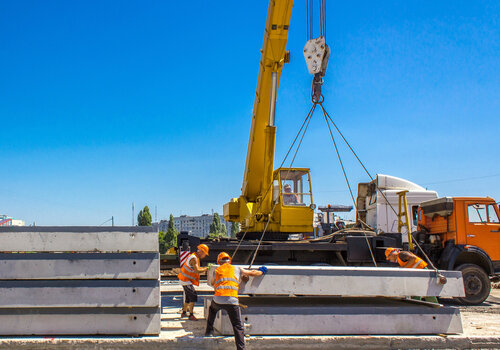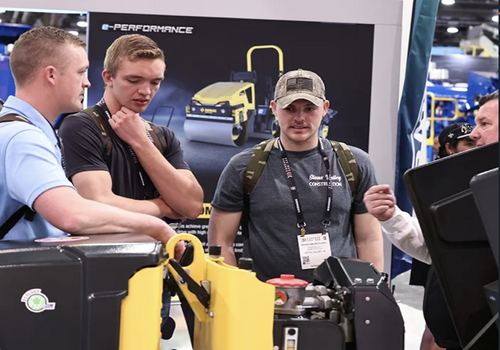For construction contractors, electric heavy equipment of all shapes and sizes on job sites is no longer a distant concept – it’s here and accelerating. With major brands producing a variety of electric heavy equipment, quietly digging, lifting and hauling will become an increasingly common sight.
A recent analysis by IDTechEx identified over 200 electric construction models already available globally and predicts the market will surge to over 650,000 electric machine sales in 2044, exceeding $126 billion in value.
ELECTRIC EQUIPMENT ON THE JOB: EARLY ADOPTERS AND PROJECTS
Real-world deployments of electric heavy equipment are growing as contractors test these machines’ mettle on active projects. One high-profile example is Skanska’s pilot on the Los Angeles Metro Purple Line extension. In 2023 Skanska swapped a diesel excavator for a Volvo EC230 Electric on this subway mega-project, using it daily to load haul trucks from a station excavation. The 23-ton electric excavator delivered the same production as its diesel counterpart with far less noise, and without the tailpipe emissions in the enclosed dig site.
Over the 90-day trial (one of the first of its kind in North America), Skanska gathered data on uptime and charging needs, helping prove that large battery-electric machines can perform reliably on demanding jobs. The contractor also piloted a battery-powered compactor/roller on the project’s roadway work, aiming to further eliminate diesel use on site.
5 PLACES TO USE ELECTRIC HEAVY EQUIPMENT
- Urban Construction & Residential Areas
Battery-powered equipment is particularly advantageous in urban settings where noise and air pollution are major concerns. Electric machines operate quietly and produce zero on-site emissions, making them ideal for city projects.
How to Get Started: Identify local noise and emission regulations, then invest in electric excavators or loaders designed for urban use. - Indoor Construction & Demolition
For indoor projects, such as building renovations or demolitions, battery-powered equipment eliminates the need for extensive ventilation systems required to mitigate diesel fumes.
How to Get Started: Choose battery-powered mini-excavators or compact loaders specifically designed for indoor use. Ensure on-site charging capabilities. - Road Construction & Maintenance
Battery-powered compactors and pavers are utilized in road construction, providing consistent performance with lower noise levels, which is beneficial for projects in residential areas.
How to Get Started: Research electric roadwork equipment like battery-powered plate compactors and pavers. Test their performance in small projects before scaling up. - Material Handling & Loading
Electric wheel loaders and telehandlers are used for material handling tasks, offering precise control and reduced maintenance compared to diesel models.
How to Get Started: Evaluate the lifting and loading needs of your project and look for electric equipment with sufficient battery life and quick charging options. - Mining & Large-Scale Excavation
The mining industry is adopting electric heavy machinery to reduce carbon emissions and improve operational efficiency. Battery-powered mining trucks and excavators are becoming more prevalent in mining operations.
How to Get Started: Explore partnerships with OEMs offering electric mining trucks and excavators. Invest in high-capacity charging stations to support fleet operations.
CONSIDERATIONS AND CHALLENGES
Despite the advantages, certain challenges persist in the widespread adoption of battery-powered equipment:
- Energy Density and Runtime: Current battery technology may not support the extended runtimes required for larger machinery, potentially leading to operational interruptions.
- Initial Investment: The upfront costs of electric equipment can be higher than traditional diesel machines. However, these costs may be offset over time through savings in fuel and maintenance.
- Charging Infrastructure: Establishing adequate charging facilities on job sites requires careful planning and investment, particularly in remote or undeveloped areas.
- Workforce Training: Training must be provided for operators and maintenance staff to familiarize them with the unique aspects of electric equipment, including charging protocols and safety procedures.
FUTURE OUTLOOK
As battery prices continue to fall and more charging infrastructure is built, experts anticipate electric bulldozers, cranes and concrete trucks will join the excavators and loaders now rolling out. In fact, manufacturers are already planning electric versions of almost every equipment category by 2030, pending further battery improvements.
Reasons for electric heavy machinery go beyond sustainability – some report that using electric gear helps meet noise ordinances and improves worker health by cutting fumes. Pioneering projects are proving the technology’s viability. The feedback from the field – on things like battery life in harsh weather or the logistics of charging on remote sites – is invaluable to refining next-generation equipment and for contractors to know when and where to use electric heavy equipment.
NEWEST ELECTRIC HEAVY EQUIPMENT MODELS AND SPECS
Until recently, electric construction machines were mostly limited to compact equipment, but that’s changing fast. In the past year alone, manufacturers have rolled out larger and more powerful battery-powered models that rival their diesel counterparts. Notable new electric machines include:
- Case 12EV Wheel Loader: A 3.8-ton compact loader with a 23 kWh lithium-ion battery, offering power equal to its diesel twin. It lifts up to 1.15 tons and runs 3–6 hours per charge. A 400V fast charger option can recharge the 12EV from 20% to 80% in about an hour.
- Dieci Apollo-e Telehandler: A 6 m lift telehandler (2,600 kg capacity) that’s the Italian firm’s first all-electric model. Dual electric motors (19 kW drive and 22 kW hydraulics) give it the same performance as diesel, and modular battery packs (up to 44 kWh total) provide a full working day on one charge.
- Volvo L120H Electric Loader: A mid-size 22-ton wheel loader (6-ton lift capacity, ~5 yd³ bucket) matching its diesel equivalent in capability. Its 282 kWh battery system provides 5 to 9 hours of runtime and supports DC fast charging to full in ~2 hours at 150 kW.
- Caterpillar R1700 XE Underground Loader: At CES 2024, Cat grabbed attention with its 16.5-ton payload R1700 XE underground loader – a monster mining machine that can recharge in under 20 minutes using dual 500 kW. The industry giant also has several battery-electric prototypes from excavators to wheel loaders.
Photo credit: KZENON/BIGSTOCKPHOTO.COM












